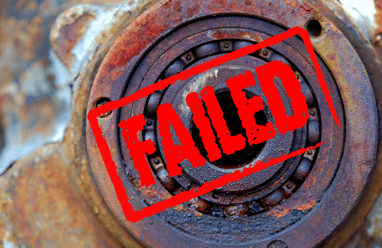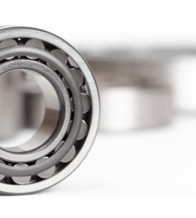In the intricate world of machinery and mechanical systems, bearings serve as silent yet indispensable components, ensuring smooth operation and reduced friction in rotational or linear motion. However, despite their crucial role, bearings are susceptible to failures that can disrupt operations, leading to costly downtime and equipment damage.
Understanding the nuances behind bearing failures is pivotal for engineers, maintenance professionals, and industry enthusiasts alike. This article delves into the multifaceted realm of bearing failures, aiming to unravel the complexities, shed light on common issues, explore preventive measures, and provide effective troubleshooting techniques to empower individuals in preserving machinery efficiency and longevity.
Various factors can lead to bearing failures, resulting in costly downtime and potential damage to equipment. Understanding the common causes of bearing failures, along with preventive measures and effective troubleshooting, is essential for maintaining operational efficiency and extending the lifespan of machinery.
Common Reasons for Bearing Failures
- Improper Installation: Incorrect installation practices, such as misalignment, insufficient lubrication during installation, or improper handling, can lead to premature bearing failure. This includes using incorrect tools or methods that result in damage during the installation process.
- Contamination: Contaminants such as dirt, dust, moisture, and abrasive particles can infiltrate bearings, leading to accelerated wear, corrosion, and reduced lubrication effectiveness. Contamination can occur during installation, operation, or due to inadequate sealing.
- Overloading: Excessive axial or radial loads beyond the bearing's capacity can cause stress, deformation, and premature wear on bearing components, ultimately leading to failure. Inappropriate selection of bearings for the intended load conditions contributes to overloading issues.
- Fatigue: Continuous cyclic loading, especially under high-speed operations or dynamic conditions, can cause fatigue in bearings. This leads to surface fatigue, spalling, cracking, or flaking of bearing components, eventually resulting in failure.
- Wear Failure: Gradual erosion or loss of material from the bearing surfaces due to continuous friction, inadequate lubrication, or abrasive particles, resulting in reduced functionality.
- Overheating Failure: Excessive heat generated due to factors like overloading, inadequate lubrication, or improper clearance, leading to thermal expansion, softening of materials, and ultimately causing bearing failure.
- Corrosion Failure: Chemical reactions or exposure to corrosive environments leading to degradation of bearing materials, resulting in pitting, rusting, or weakening of the bearing components.
- Misalignment Failure: Incorrect positioning of shafts causing misalignment, leading to uneven loading, increased stress, and premature wear of bearings.
- Brinelling: Indentations or impressions on the bearing surfaces due to excessive loads, shocks, or impact, causing localized stress and eventual failure.
- Electrical Damage: Occurs in bearings subjected to electrical currents, causing pitting or fluting due to arcing between rolling elements and raceways.
- Cage Failure: Damage or deformation of the cage (also known as the retainer) due to excessive speed, load, or inadequate lubrication, leading to instability and subsequent failure of the bearing.
Understanding these various types of bearing failures is crucial for identifying, preventing, and addressing issues promptly to ensure optimal machinery performance and longevity.
Preventing Bearing Failures
- Proper Installation Techniques: Adhere strictly to manufacturer guidelines for installation, ensuring correct fitting, alignment, and using appropriate tools. Proper handling and care during installation are crucial to prevent damage.
- Contamination Control: Implement measures to minimize contamination, such as using seals, shields, or protective covers, maintaining a clean environment, and regularly inspecting and cleaning bearings.
- Load Management: Ensure bearings are selected based on load requirements, and avoid overloading by understanding the operational conditions and limits of the bearing.
- Effective Lubrication: Establish a consistent and appropriate lubrication schedule using the recommended lubricants suitable for the operating conditions. Avoid both under-lubrication and over-lubrication.
Troubleshooting Bearing Issues
Vibration Analysis: Use vibration monitoring tools to detect abnormal vibrations, which can indicate misalignment, imbalance, or bearing defects. Investigate and rectify issues promptly.
Temperature Monitoring: Regularly check bearing temperature. A sudden rise in temperature could signify inadequate lubrication, overloading, or other issues.
Visual Inspection: Periodic visual inspections for wear, corrosion, or damage are crucial. Look for signs of pitting, flaking, or abnormal wear patterns.
Root Cause Analysis: When failures occur, conduct a thorough analysis to determine the root cause. This may involve examining installation records, assessing operational conditions, and reviewing maintenance practices.
Understanding the root causes of bearing failures and implementing preventive measures are critical to maintaining machinery reliability and productivity. Regular monitoring, proactive maintenance, proper training of personnel, and a comprehensive understanding of bearing operation and conditions contribute significantly to preventing failures and ensuring efficient machinery operation over the long term.
Extending the Lifespan of Bearings
Proper maintenance of bearings is essential to ensure optimal performance, longevity, and efficiency of machinery. Implementing best practices in installation, lubrication, monitoring, and troubleshooting can significantly extend the lifespan of bearings, reducing downtime and maintenance costs.
Installation Techniques
Clean Environment: Ensure the installation area is clean and free from dust, debris, or contaminants that could compromise the bearings' performance.
Proper Handling: Handle bearings carefully to avoid damage. Use appropriate tools and techniques, preventing dents, scratches, or misalignment during installation.
Correct Fitting: Ensure bearings are correctly fitted according to manufacturer specifications, utilizing suitable mounting methods such as press fitting, shrink fitting, or using proper tools like induction heaters.
 Lubrication Methods
Lubrication Methods
- Selection of Lubricants: Choose the right lubricant based on the operating conditions, speed, load, and temperature range specified by the manufacturer.
- Regular Lubrication: Establish a lubrication schedule, adhering to recommended intervals and quantities. Over-lubrication can be as harmful as insufficient lubrication, causing excessive heat and friction.
- Proper Application: Apply the lubricant evenly and effectively to ensure it reaches all critical contact points within the bearing.
Monitoring for Wear and Tear
Vibration Analysis: Implement regular vibration analysis to detect abnormal vibrations, indicating potential bearing issues. Invest in vibration monitoring tools for timely detection of problems.
Temperature Monitoring: Monitor bearing temperature regularly. Sudden increases in temperature can signal impending bearing failure due to increased friction or lack of lubrication.
Visual Inspection: Periodically inspect bearings for signs of wear, corrosion, or damage. Look for pitting, rust, or irregularities on the surface.
Troubleshooting Common Issues
- Misalignment: Misalignment of shafts can lead to premature bearing failure. Correct alignment issues promptly to prevent unnecessary stress on bearings.
- Contamination: Keep bearings protected from contaminants like dirt, water, or chemicals. Implement seals or shields to prevent intrusion.
- Improper Loading: Ensure bearings are not subjected to excessive loads beyond their capacity. Use appropriate bearings for the specific application and load conditions.
By adhering to these best practices, industries can significantly enhance the longevity and reliability of bearings, ultimately minimizing downtime, reducing maintenance costs, and improving overall operational efficiency. Additionally, establishing a comprehensive maintenance schedule and providing proper training to personnel involved in handling and monitoring bearings are integral parts of ensuring optimal bearing performance.
Regular maintenance, including inspection, lubrication, and proactive troubleshooting, is crucial to identify and address potential issues before they escalate, ultimately extending the lifespan of bearings and contributing to the smooth operation of machinery and equipment in various industrial sectors.
.png?width=668&height=154&name=Copy%20of%20Copy%20of%20Clearance%20(6).png) Here at BDS, not only do we house the largest inventory of bearings in North America, we also have extensive repair, modification and manufacturing capabilities through our sister company BMC. Visit our website or give one of our highly knowledgeable sales representatives a call and see how we can be your one source for all your bearing solutions.
Here at BDS, not only do we house the largest inventory of bearings in North America, we also have extensive repair, modification and manufacturing capabilities through our sister company BMC. Visit our website or give one of our highly knowledgeable sales representatives a call and see how we can be your one source for all your bearing solutions.







